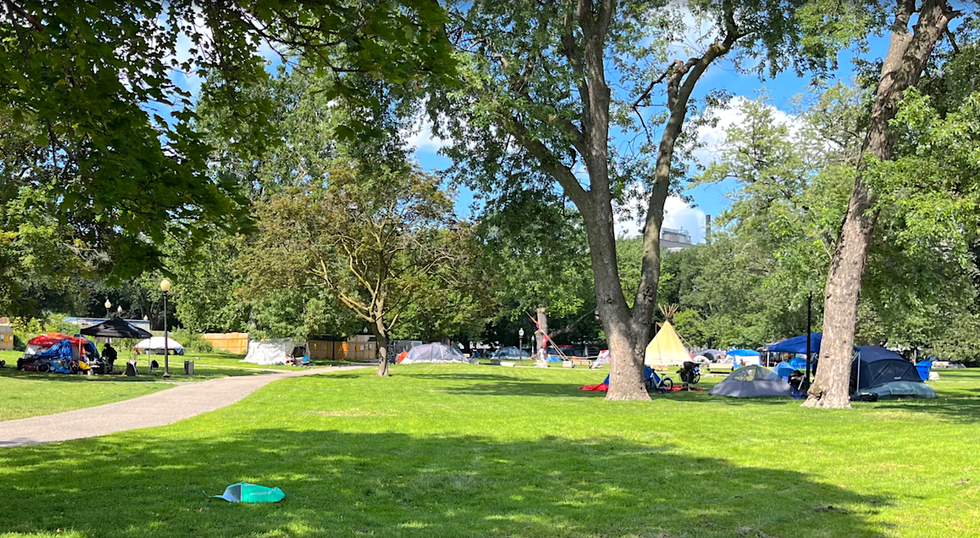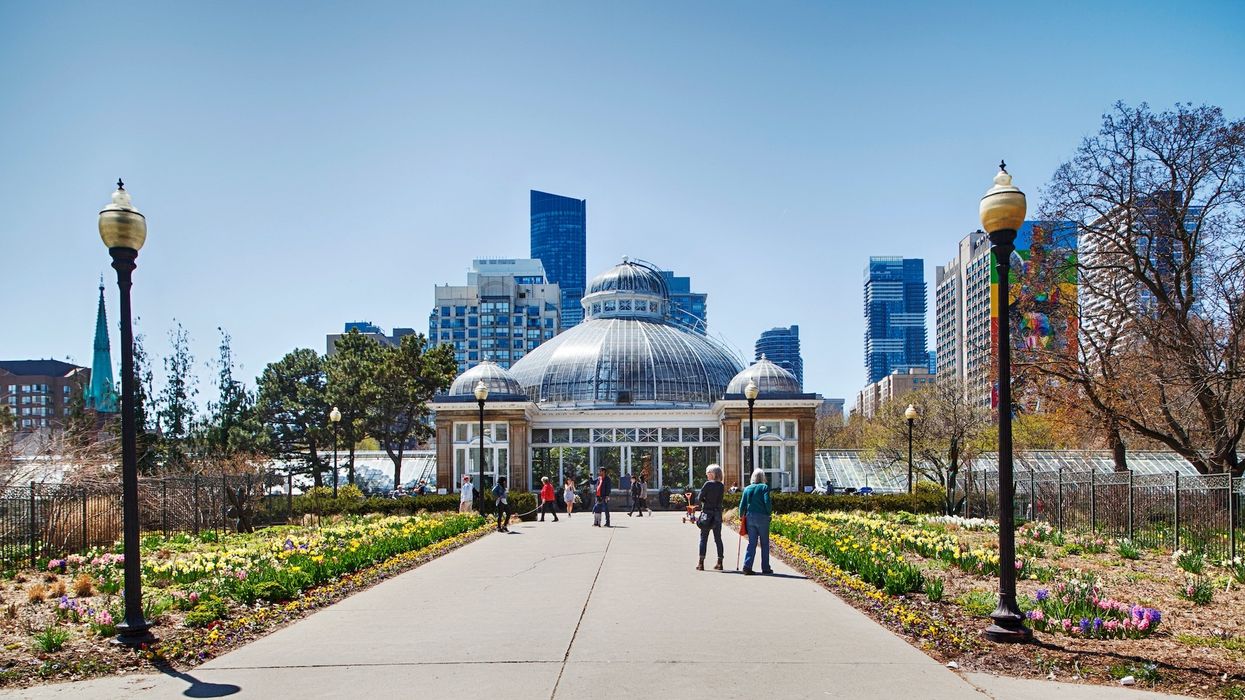A walk in the park isn’t what it used to be. In a city like Toronto, where housing is beyond the reach of so many residents, green space has become living space for the homeless multitudes that have nowhere else to go. Their tents now occupy the lawns where kids played and dogs cavorted.
For Matt Canaran, Project Manager and Volunteer Co-Ordinator at the Friends of Allan Gardens (FOAG), a job he expected would provide an opportunity to apply his knowledge as a landscape architect has turned into a test of his skills as a social worker.
Such is the nature of the urban park in the 21st century. Never has the public realm been so hotly contested. Not only are streets now shared by cyclists, scooters and even pedestrians, sidewalks by restaurants and cafes, parks are under pressure to accommodate new and diverse demands.
Opened in 1860 on land donated by William George Allan to the Toronto Horticultural Society, Allan Gardens has changed over the decades while staying largely the same. Though its magnificent collection of architectural greenhouses remains the park’s defining feature, the open space to the east tends to attract more attention. It has been the site of demonstrations, protests and social movements since the late 1800s. Given its downtown location south of Gerrard Street between Jarvis and Sherbourne, perhaps that’s not surprising.
“We’ve been an important place for social change almost since the beginning,” Canaran explains. Indeed, the National Council of Women of Canada, which advocated for women’s equality, was founded in Allan Gardens in October, 1896. That same year, Canadian Suffragettes held a mock-parliament in the large conservatory where they debated whether an imagined all-female government would — should — give men the vote.
The battle of the gender equality continues, of course, but it has been joined most recently by the struggle of the dispossessed for a place to call home, even if it’s temporary, illegal and as flimsy as canvas.
“There’s a lot of pressure to remove the encampment,” Canaran admits. “But it also has a lot of support. We have 35 tents today, down from last spring when there were 90. We’re working with local social agencies and the city to find permanent homes for the residents. I know most of the people who live in the park. We have great a relationship. We do what we can to help them. We hire encampment people to work at certain events like concerts.

“We’re not letting new tents into Allan Gardens. I think the city learned from what happened at Trinity Bellwoods Park.” That’s where police were severely criticized for the violence they used to clear a similar encampment in June, 2022.
“We’re trying to address the big issues,” says Canaran, who points out that that encompasses plants, gardens, the need for green space as well as the magnificent conservatories unique to Allan Gardens. In addition to “animating the park,” his mandate includes expanding the greenhouses and restoring 112-year-old palm house.
With all this in mind, Canaran and FOAG will launch an ambitious $50M fundraising campaign in early 2024. No question that’s a lot of money, but this park is a lot more than your ordinary garden-variety green space.
“I think history is being made in the park right now,” says landscape architect and FOAG Director Brendan Stewart. “The board understands that Allan Gardens is a ground zero for issues facing the city. It always has been. What we’re learning now is what kind of role we can play in the future. We need to figure out the role of horticulture in the city today and look at the relationship between plants and people. We also need to find ways to help people relate to the natural world. We do ourselves a disservice when we think we are outside nature. We offer opportunities for broad community stewardship.”
Both Stewart and Canaran are determined to make Allan Gardens a community hub. “Plants are the beginning of our relationship with the whole city,” says Canaran. "Horticulture is the draw, but we need more interpretation, more community space as well as greenhouse space. We want it to be a green beacon for all Torontonians.”
Allan Gardens’ past as a place beset by a wide range of challenges — social, economic and horticultural — has prepared it to meet the demands of a future that seems more uncertain than ever. The space of nature in the city has never been under such pressure. At the same time, the need has never been greater. Having paved paradise to put up parking lot, we are slowly waking up only to find that getting back to the garden will be harder than expected. Especially now that everyone wants in.





















